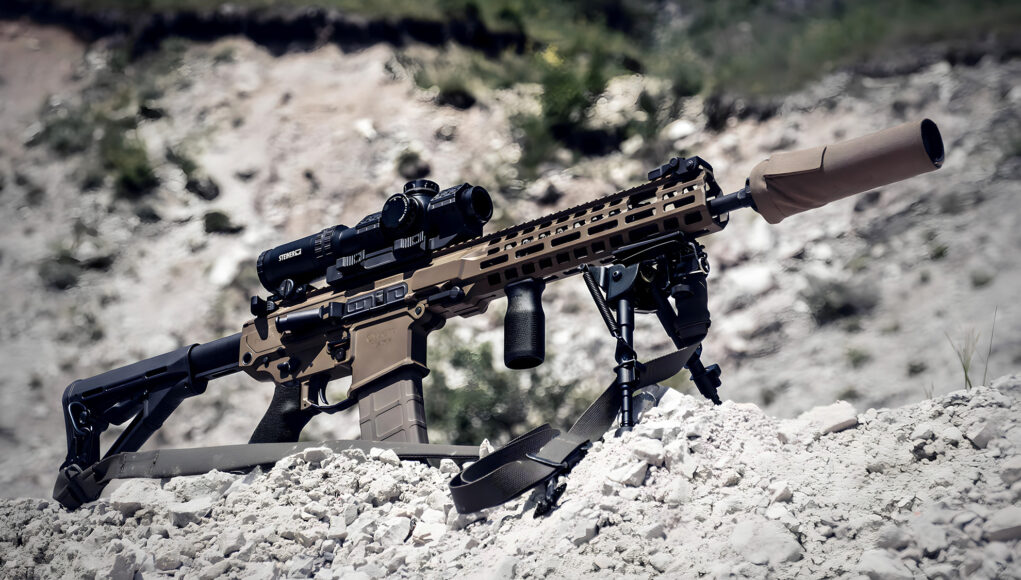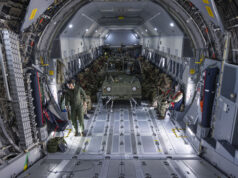Beretta Defence Technologies UK (BDT UK) has unveiled its Land Industrial Strategy for Project Grayburn at DSEI 2025, laying out a roadmap to re-establish a sovereign small arms industry in Britain for the first time in more than two decades.
The strategy outlines how BDT UK could localise rifle production for the Ministry of Defence, presenting options to manufacture 5%, 20% or 100% of components domestically. Each scenario sets out different impacts on unit price, investment and employment, with the company positioning Project Grayburn as a potential catalyst for new UK industrial capability.
The proposals draw on Beretta’s experience with localisation projects overseas, including the M9 pistol programme in the United States and the creation of Bindig in Qatar with Barzan Holdings. In the UK context, the company argues that Grayburn could become a launchpad for wider opportunities, including small arms for law enforcement and export markets.
Jack Cadman, Military Group Manager at BDT UK, said the launch “solidifies our commitment to providing a new individual service weapon to the British Armed Forces and highlights the true economic impact that our plans could have for the UK. For us, GRAYBURN is just the start – we are committed to creating a UK strategic partnership with the MoD to ensure we can deliver for now and for decades to come.”
BDT UK made clear that its strategy goes beyond replacing the SA80. The company framed Grayburn as the foundation for a longer-term partnership between defence and industry, one that could broaden into a domestic small arms manufacturing base with export potential.
The announcement marks a deliberate attempt to shape debate around the UK’s future small arms capability, presenting Grayburn as both a procurement programme and an industrial policy lever.














Seems a bit premature, we still don’t know what calibre of weapon we are looking for. Last thing I heard was that it would be 6.5mm. Any advances on that?
This will be that old chestnut thing about the balance of weight/storage against damage done.
Even in the World of Airgun shooting, more people have been injured by arguing about, than actually being shot by a .177 or .22, personally I prefer a heavier Pellet but I can also remember the Hoo-ha when “We” went from 7.62 to 5.56.
Maybe this 6.6 round is the best choice.
Anyone want to let me loose with a few, I’d be happy to give my opinion. Got plenty of ducks and Vermin targets in the back garden.
Funny thing was that I was cleaning an old BSA and a Webley Service Riffle when I saw this article.
Plink, plink.
Rob, I disagree. This is a strategic level piece of planning to re-create a British SA Industry. Build the factory first….then the weapons.
I never heard 6.5 the USA is apparently switching to 6.8 the only 6.5 I’ve heard is the RM changing there marksman rifle from 7.62 to 6.5cm
5.56 is more than adequate we have belt feds is larger rounds to give us that capabilities
Wow 6.5cm’s is some Gun !!!
6.5cm stands for creedmore
That would be 6.5mm Creedmore then.
No that would be 6.5cm for short
Lol, OK you win !
Shakes head.
The fact that u thought 6.5cm stood for centre meters has me shaking my head it’s not a artillery piece
You typed 6.5cm How stupid are you to think someone wouldn’t pick that up. The entire ammunition World uses mm’s. Deary me.
I’m the stupid one lol while u thought there was a rifle that was 6.5 centimetres lol and to think only today at the range in the column where u put the calibre of the ammunition used I put 6.5cm and they all knew I was talking about creedmore interesting
Yeah like everyone else knew what you were talking about. Lol.
So next time I see a cm (Centimeter,just incase you didn’t know) I’ll assume it stands for Creedmore. FFS, even my 3 year old knew what cm stood for.
You got it wrong, should have put mm and now you are faffing about trying to make out you are talking about a name.
Deary me.
Stick around Tim, I can’t wait to see what rubbish you come up with next.
Anyone who shoots rifles knows there isn’t a bloody 6.5 centimetre calibre rifle and that 6.5CM stands for 6.5 creedmore
I hope NATO trials the 6mm Arc, 6.5 Grendel & FN 6.5 LICC. Any one of those is better than 5.56, without being as bonkers crazy as 6.8 Sig Fury magnum.
I was talking to an ex soldier who was involved in weapons testing and procurement the other day. He said the 6arc was great at ranges, high energy, flat ballistic trajectory. The problem was with CQB apparently, the high energy caused the bullet to travel straight through the target maintaining its energy and not transferring it to the target. Therefore causing less effect on target.
Just passing on what he told me.
The weight carried by a grunt remains the same so we are carrying fewer rounds?
Has to be whatever the nato round is. Given the small size of uk army, think we have to be realistic plus small arms exports to inappropriate countries will be closely watched.